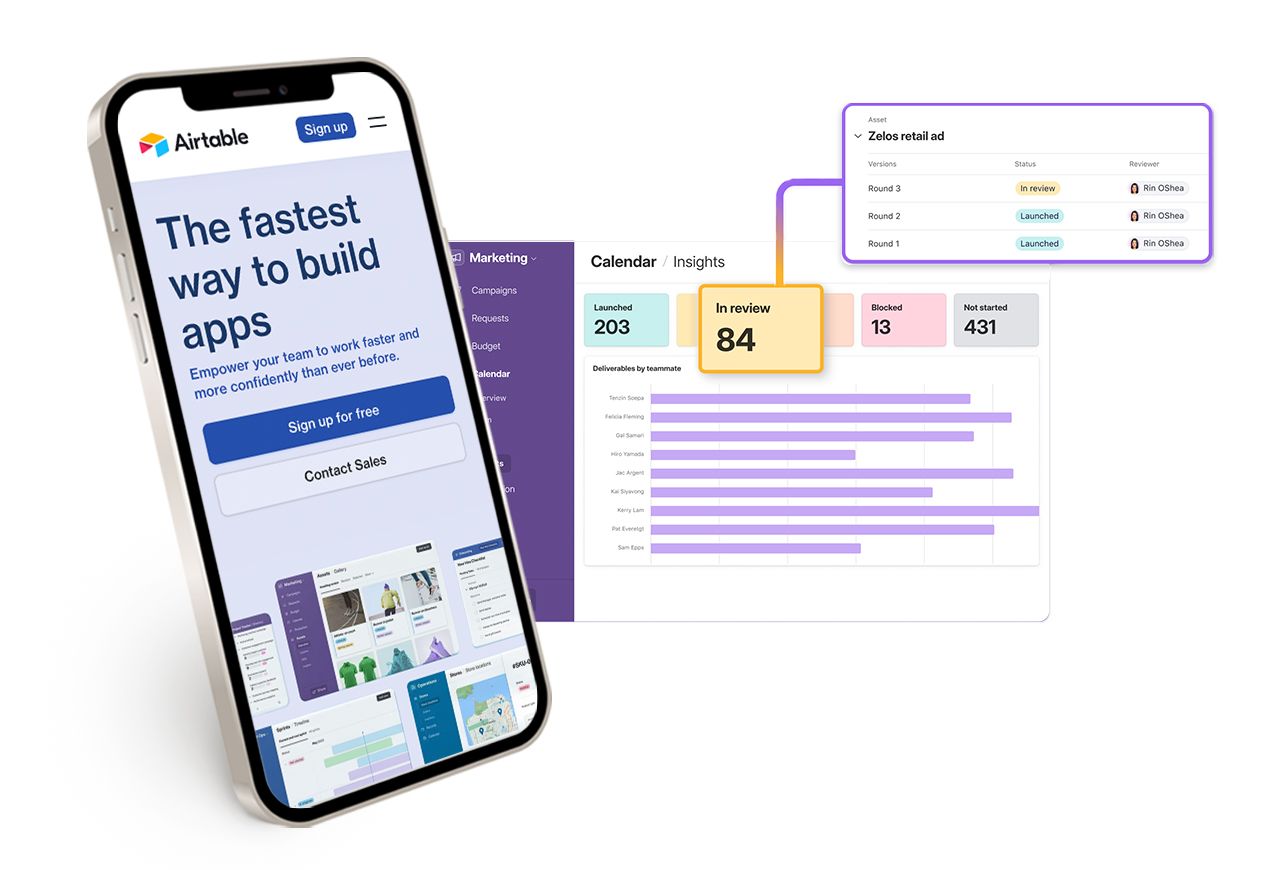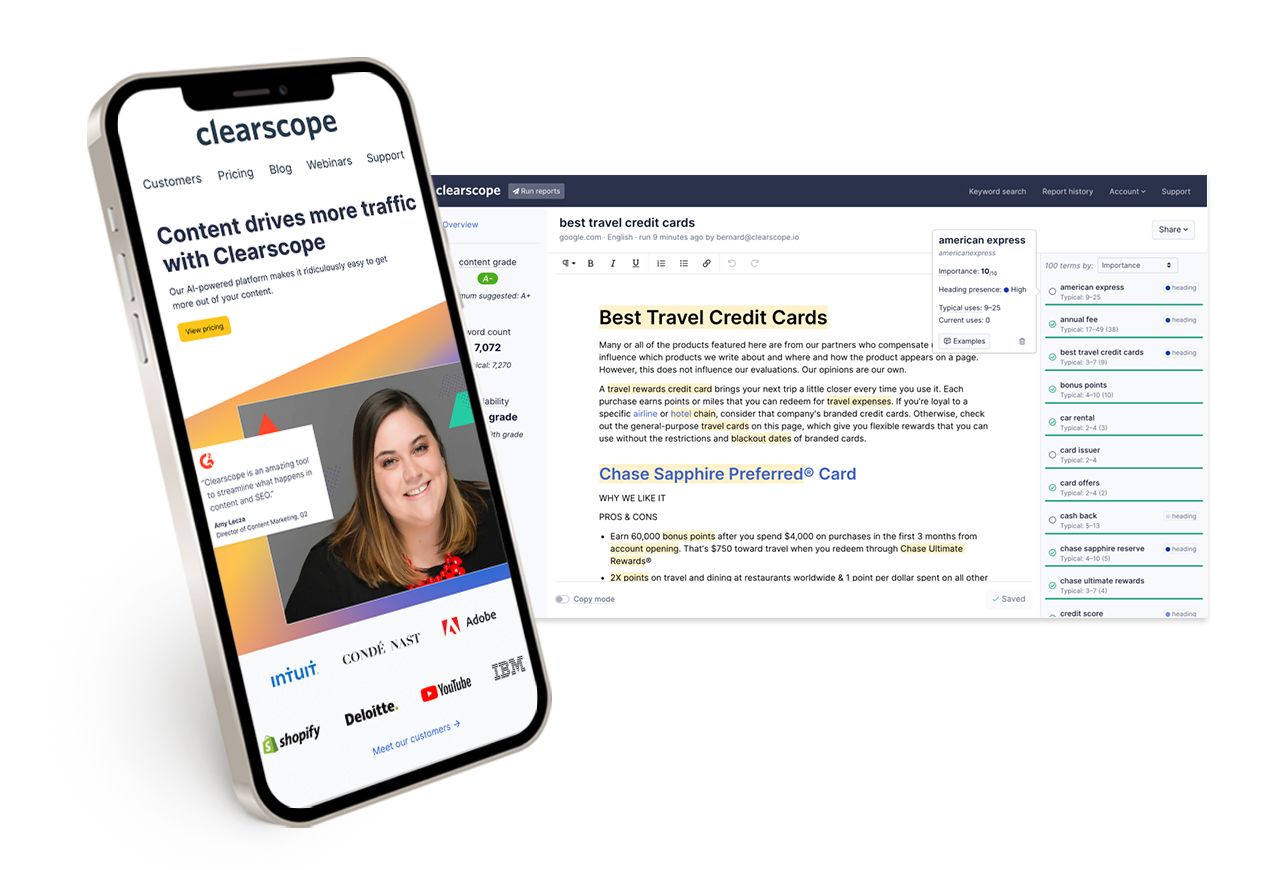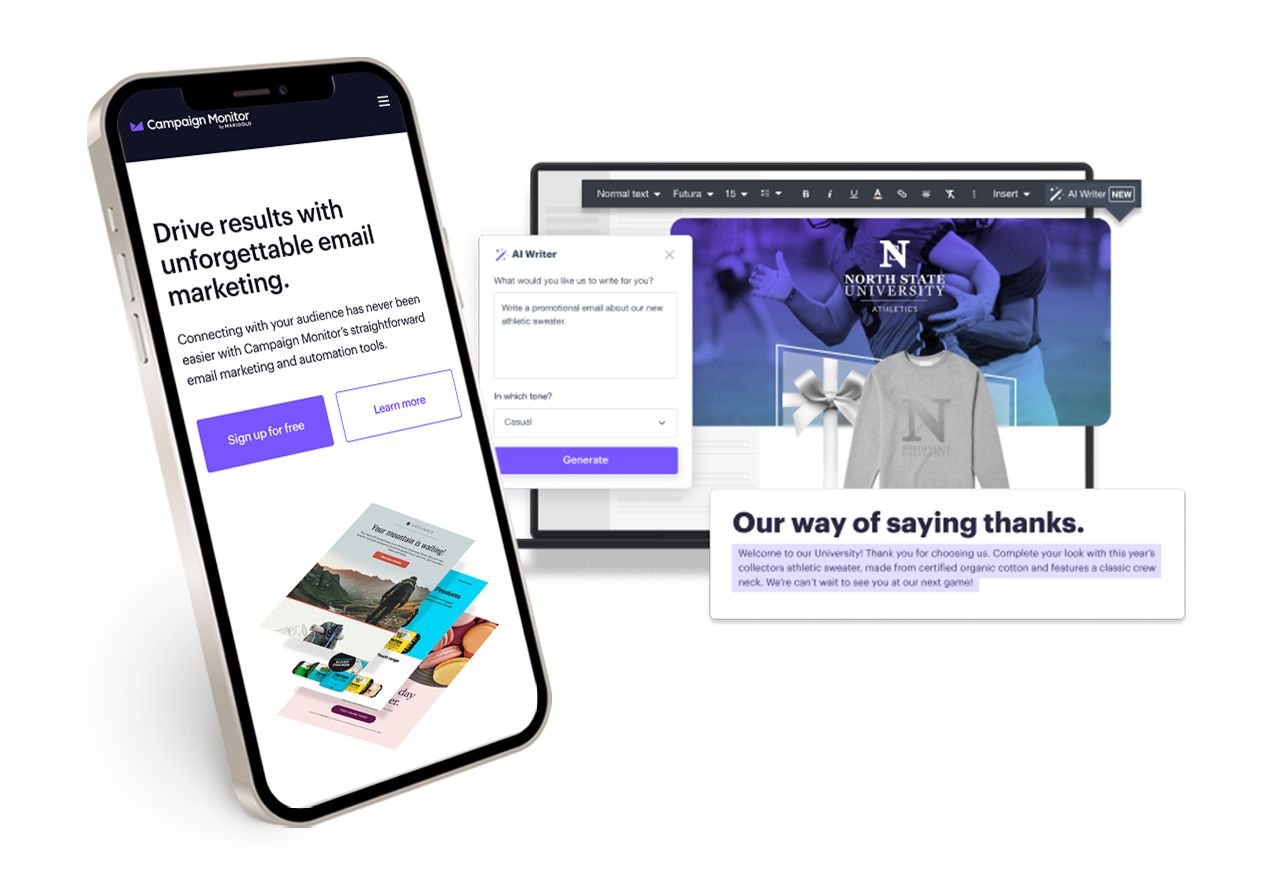Ten content marketing tools for 2024

By Matt McGregor
By Matt McGregor
One of the most difficult things about content marketing today is deciding what tools to use. There are an enormous number on the market, from niche solutions to all-in-one platforms.
In this guide, we run through the best content marketing tools out there, determined by what we’ve actually paid for and used at Shorthand. We also list some of their well-known competitors, so you have a sense of what else is on the market.
Our list includes:
Join the BBC, Tripadvisor, and Penguin, and publish stunning, multimedia web content with Shorthand.
Publish your first story for free — no code or web design skills required.
Get started.
Publishing tools

The most important stage of content marketing is publishing to an audience, so let’s start here.
Until recently, most content marketing teams used whatever blog tool they inherited with their content management system (CMS). Most of these CMS platforms have blog templates that are incredibly generic and have barely evolved over the last decade.
These templates don’t leave a great first impression with your target audience, and they typically don’t handle the types of content that modern content teams want to tackle, such as data visualisation and digital magazines.
Happily, that’s changing. With the rise of immersive content platforms, teams are investing in high-quality reading experiences for their owned media. And they’re using platforms like Shorthand (that’s us) to do it.
Shorthand

Shorthand allows anyone to create beautiful visual content in a short amount of time. Unlike many other visual content tools, Shorthand lets content marketers design and publish beautiful content with a simple drag-and-drop interface. This means that they can focus on the narrative and result, rather than the finer points of responsive layout, CSS styling, and code.
While Shorthand can be used for blogs, it’s also a great option for other formats like digital magazines, landing pages and feature stories. You can see some great examples of content built with Shorthand in this Featured Stories gallery, or give it a try yourself in one of our 10 free feature article templates.
Notable features:
- Using automatically-generated 3D Imagery, Shorthand gives static images the illusion of depth and allows you to place your text 'inside' an image, while still keeping it visible to search engines and screen readers. You can see an example here.
- Scrollpoints allows you to take the reader on a journey across a high resolution image. This feature is perfect for creating immersive explainer content, interactive maps, and more.
- While you don't need to be able to understand HTML or CSS to use Shorthand, you can embed custom components or code if you want to. This has never been easier, now that you can use AI to help. Read about how to amp up your Shorthand content with ChatGPT-generated code.
Shorthand has a tiered pricing model, helping you pay only what you need, while getting access to all its features. Check out the options here. Publishing your first story is free.
Alternatives to Shorthand
The main alternative to Shorthand is a CMS. While you won’t be able to produce the same experience as Shorthand without developer and web design expertise, you can still publish a perfectly serviceable blog. The most common CMS providers are Wordpress, Drupal, and Webflow.
Project management tools

All successful content teams rely heavily on project management tools. These are especially important for documenting processes, tracking workflows, collaborating with freelancers, and managing a busy content calendar.
Most of the time, content marketers will need to use whatever tools the company as a whole has chosen. But if you do have a choice, we recommend going with Airtable and Notion.
Airtable
Let’s start with my personal favourite. Airtable is a no-code database tool that allows content marketers to create complex editorial calendars with many different moving parts.
At first blush, it looks a bit like a spreadsheet. But under the hood, it’s a powerful tool for planning and automating your content marketing workflows.
At Shorthand, we used it for planning future work, sharing plans with colleagues, tracking collaborators, managing budgets, and keeping content fresh.
Notable features:
- Airtable automations allow you to trigger database changes and communications — such as Slack messages and emails — as content projects are updated and published.
- You can create a range of views from your database, including Gantt charts, timelines, kanban boards, and galleries.
- With Forms, you can gather data from your audience and have it ready for analysis in your database.
Airtable has a free version, though this has recently become much less generous. Paid plans start at $24 per month.
Notion
Notion is an all-in-one knowledge management app that works as an internal knowledge base, project management tool, and — increasingly — content creation tool.
For content marketers, Notion is primarily useful as a place to document content marketing strategy, workflows, and processes. It’s also a useful way to collaborate on projects with other teams, who might not want to work in a database tool like Airtable.
Note that you can also create Airtable-like databases in Notion. I’ve never found these to work particularly well, though if you only have the budget for one tool, you can probably get by.
Notable features:
- Notion has a built-in AI tool that can speed up the writing process for generic content.
- It’s easy to navigate and find what you need (especially compared with legacy knowledge management tools).
- Notion is famous for its template library, and has a range of content-related templates that will help if you’re starting from scratch.
Notion has a limited free plan for individuals, with paid plans starting at $10 per team member per month.
Alternatives to Airtable and Notion
There are scores (literally) of alternatives to Airtable and Notion. Trello is a great starting point for providing a simple overview of your content projects. Monday.com, Asana, and Clickup are all very established tools that will work for enterprise content programs with dozens of collaborators.
Research tools

The best content marketers spend at least as much time researching and planning as they do creating content. Research tools can be used for search engine optimisation (SEO), audience insights, and keeping on top of trends relevant to your target audience.
At Shorthand, we’re long-time users of Semrush.
Semrush
Semrush is a comprehensive digital marketing platform that offers features for keyword research, SEO audits, backlink audits, ideation, pay-per-click (ppc) advertising research, content optimisation, and more. It's the perfect tool for understanding where you stand competitively and for uncovering opportunities to enhance your content strategy.
The product itself can feel busy — they have many, many different features and tools bolted onto their primary use case — but the primary research tool is excellent. At Shorthand, Semrush is used for everything from tracking ranking metrics to validating content ideas.
Notable features:
- Semrush’s core functionality provides search volume estimates and related terms for search terms. While these estimates are imperfect, they’re as good as you’re likely to find outside of Google itself.
- Semrush is great for competitor research (otherwise known as ‘borrowing good ideas’). You can search and track the highest ranking web pages of competing domains.
- Semrush also has a writing assistant, which scores content according to readability and offers grammar advice.
Pricing for Semrush starts at $99/month.
Alternatives to Semrush
Most people working in SEO use either Semrush or AHrefs — two tools with strange names and a great reputation for detailed keyword research. Other popular tools include Buzzsumo for online trends and influencer research, and Sparktoro for audience research.
Content optimisation tools

Content optimisation tools make it easier to write content that ranks well in search engines. While these tools have existed since the birth of search engine optimisation, the latest generation of tools use natural language processing to give much more sophisticated and specific advice.
We’ve used Clearscope for three years, and can recommend it for anyone looking to rank well in Google and Bing.
Clearscope
Clearscope is a leading content optimisation tool used by businesses like Shopify, Intuit, Adobe, and Shorthand.
The tool provides a list of semantically-related keywords for each search term, as well as the heading structure for competing content. This is useful for creating briefs and optimising drafts.
Most importantly, though, the proof is in the pudding — and Clearscope was an important part of Shorthand’s growth in SEO.
Key features:
- The tool famously gamifies the process of optimisation, providing a letter grade for each piece of content. This will bring out your inner Lisa Simpson, as you sweat for that precious A++.
- Its Google Docs integration makes content optimisation easy during the drafting process.
- Clearscope reports can be shared with content writers, so that optimisation can be built into the first draft.
Like many other optimisation tools using natural language processing, Clearscope is relatively expensive per query. Plans start at $170 per month for ten queries.
Alternatives to Clearscope
Popular alternatives to Clearscope include Frase, Content Harmony, and SurferSEO. Yoast is a popular Wordpress plugin that provides ‘lite’ SEO optimisation. There are also a range of non-SEO optimisation tools that help you make better content for humans, such as Hemingway and Grammarly. Learn more in our guide to content optimisation tools.
Email marketing tools

Content marketers often inherit email marketing as part of their job. In small companies, content marketers will be writing everything from nurture sequences to transactional emails.
Unfortunately, email marketing can also be one of the most stressful and painful parts of a content marketer’s role. In my experience, the tools content marketers use plays a big role in determining just how stressful and painful it is.
At Shorthand, we use Campaign Monitor.
Campaign Monitor
Campaign Monitor is an easy-to-use email marketing platform that is perfect for busy teams with limited design resources.
The tool supports lightweight automation sequences, which is perfect for simple nurture flows.
Notable features:
- The drag-and-drop editor really is simple to use. Even though the design can feel limited, it’s also difficult to break layouts.
- Campaign Monitor offers decent reporting on the performance of marketing campaigns. It also integrates with major analytics platforms like Google Analytics to manage conversion tracking.
- Campaign Monitor also supports transactional emails, making it easier to keep a consistent brand across all the email you send.
Pricing for Campaign Monitor starts at US$9 per month, and scales up according to the number of contacts in your database.
Alternatives to Campaign Monitor
This is a crowded category. ActiveCampaign and Sendgrid are two of the most popular marketing automation and email marketing tools. Mailchimp and Squarespace offer tools that are popular with ecommerce. Hubspot is a content marketing platform — with CMS, CRM, and reporting tools — that also provides email marketing.
Generative AI tools

Shorthand doesn’t typically use generative AI for its content on The Craft, but we’ve run plenty of experiments as a team. I’ve personally tested a dozen AI tools, and this is only a fraction of what’s available in this ever-expanding market.
Before I dive into my recommendation, let me admit upfront: I find it extremely difficult to say which AI tool produces ‘better’ content. This is because many AI providers aren’t very transparent about their models. It’s also because ‘prompt engineering’ — the words you give the AI to get your answer — is a hugely important factor in determining the results you get.
With those caveats, my personal favourite is Jasper.
Jasper
Jasper is an AI-powered platform designed to simplify the process of creating written content. It does this by using natural language processing and machine learning technologies to generate various types of text content automatically.
For content marketers, this can mean a faster and more efficient way to produce blog posts, social media posts for LinkedIn, scripts for video content, product descriptions, and more. You can also use Jasper to create derivative content from the transcripts of longform podcasts and webinars.
I’m a strong believer that the best AI content is a wrestling match, where a dynamic push-and-pull between an experienced writer and the AI platform produces the best results. This is also the conclusion in the team at content marketing agency Animalz.
Notable features:
- The ability to customise writing style and tone, making it adaptable to individual brand identities.
- Integrations into Wordpress, SurferSEO, and Grammarly streamline the production of SEO content.
- The Jasper Chrome extension allows you to generate AI content in a range of web applications.
Individual plans for Jasper start at US$39 per month. If you’re looking for a more affordable Jasper-like tool, we’d recommend WriteSonic.
Alternatives to Jasper
The main alternatives to Jasper are ChatGPT, WriteSonic, Copy.ai, and Writer.com. You can see other alternatives in our roundup of 15 generative AI tools.
Design services

Most content marketers have a background in writing, and are hired into a company to write blog posts. This is usually all the investment a company makes in their blog, which is why so many blogs look like they were, well… designed by writers.
If you can’t afford a full-time designer but still want to produce professional graphic design resources, you might consider using a fixed-fee design agency. These agencies promise an all-you-can-eat design service, with the caveat that they only work on one project at a time.
As with all outsourced creative projects, these agencies require some careful management, but can be an efficient way of creating beautiful work — especially if paired with an immersive content platform like Shorthand.
Design Pickle
Design Pickle is a creative service provider that simplifies the design process for businesses. With Design Pickle, you get access to a team of professional graphic designers who can create a wide range of visual content for your brand. This includes everything from logos and marketing materials to social media graphics and infographics.
The platform streamlines the design workflow, making it easy for businesses to request, revise, and receive custom-designed assets quickly. It's an ideal solution for companies that want high-quality visuals without the hassle of hiring in-house designers or dealing with the complexities of traditional design agencies.
Notable features:
- The main feature of Design Pickle is its subscription-based model, which offers unlimited design requests for a flat monthly fee.
- The service from Design Pickle has been typically excellent and professional.
- Design Pickle can create Canva templates for each design, allowing you to create variations while keeping the professional designers on higher value tasks.
Pricing for Design Pickle starts at AU$745 a month.
Alternatives to Design Pickle
There are many alternatives to Design Pickle. On the cheaper end of the spectrum, you can use generative AI and Canva, though this will require you to have an eye for good design, with which not all of us are blessed. For a more apple-to-apples comparison, you can try Penji and Flocksy.
Conclusion
In a web crowded with solutions for all kinds of content marketing, finding the right (or, a right) tool can help streamline your workflow and free up creative energy for other tasks.
Looking for more? Our Writing and Design Tips are full of insight and inspiration. Or, sign up to The Craft newsletter and receive the web's best storytelling in your inbox.
What tools do you use for your content marketing efforts? Let's keep the conversation going on over at our community.









